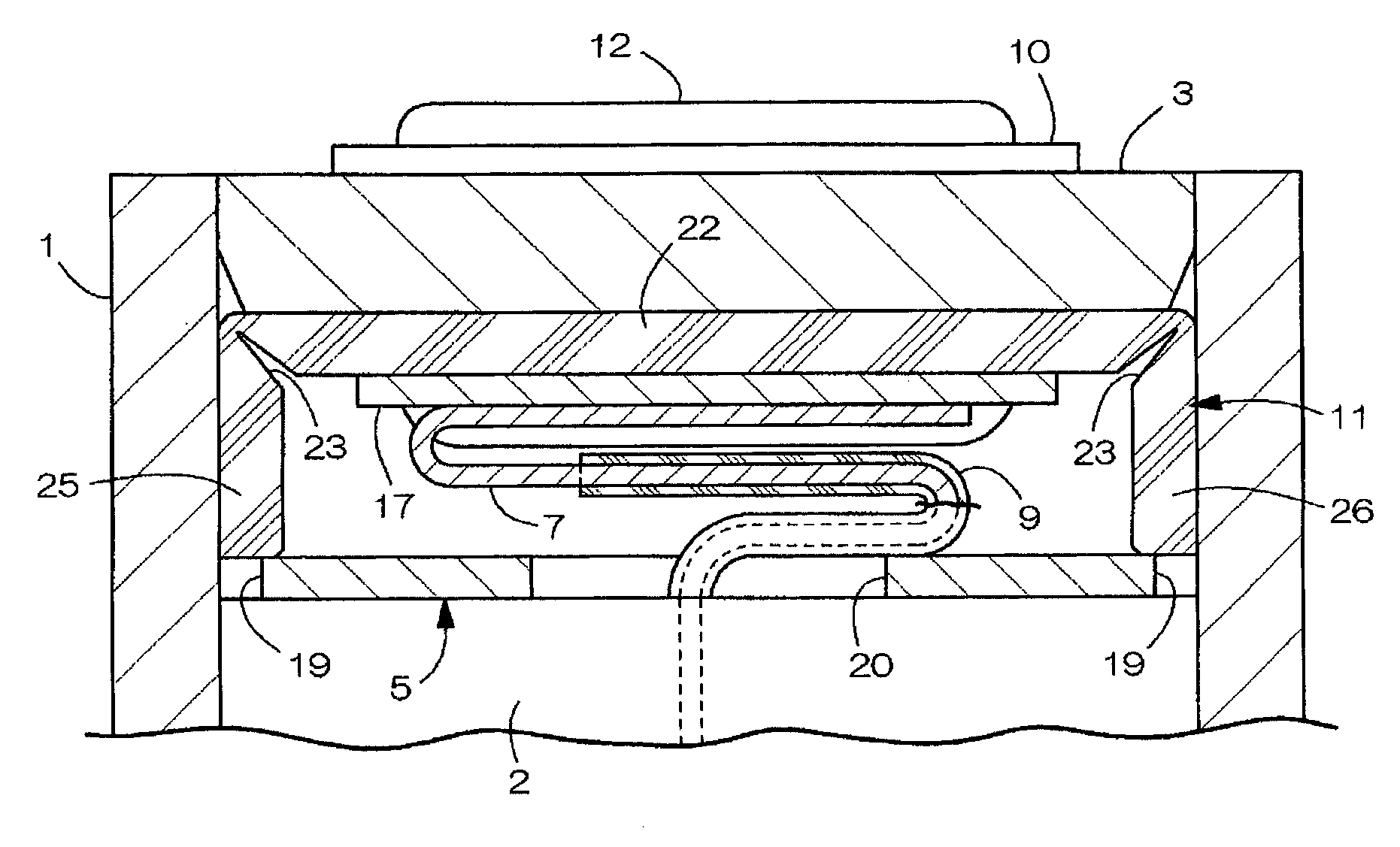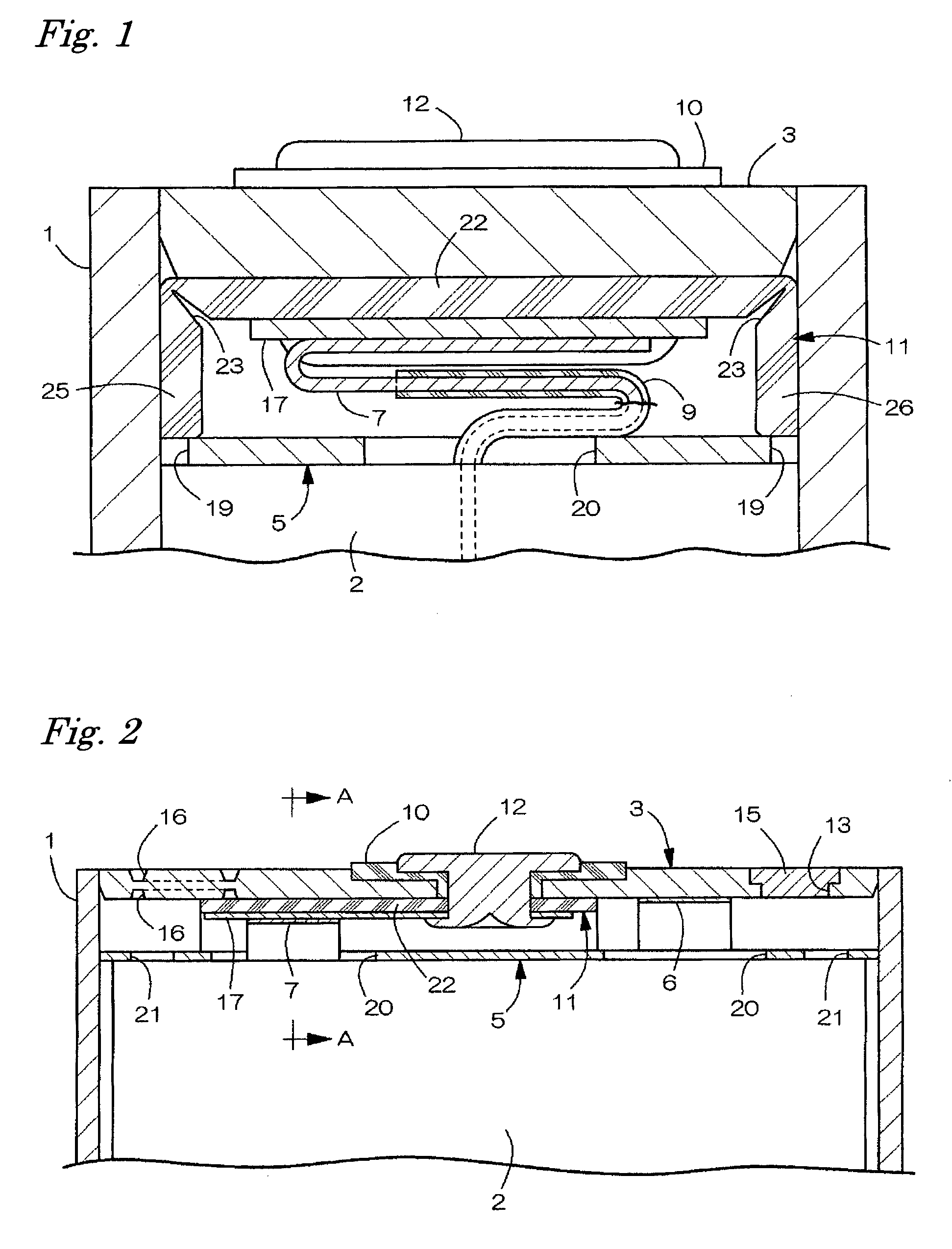Sealed prismatic battery
a prismatic battery and prismatic technology, applied in the direction of current conducting connection, wound/folded electrode electrode, cell components, etc., can solve the problems of short circuit of the current collector lead of the electrode, difficult welding of the current collector lead of the negative electrode to the lead plate, and obstructive sidewall of the insulator. , to achieve the effect of easy welding of the current collector
- Summary
- Abstract
- Description
- Claims
- Application Information
AI Technical Summary
Benefits of technology
Problems solved by technology
Method used
Image
Examples
first embodiment
[0035]FIGS. 1 through 5 show the first embodiment of a lithium ion secondary battery as the sealed prismatic battery of the present invention. As shown in FIG. 3, the lithium ion secondary battery has a closed-bottom prismatic tubular battery can 1 that has a laterally elongated opening at its upper surface, an electrode body 2 and a nonaqueous electrolyte accommodated in the battery can 1, a laterally elongated lid 3 that closes the upper surface of the opening of the battery can 1, a thin-plate-shaped insulating plate 5 placed on the upper side of the electrode body 2 and so on. The battery can 1 is formed into a longitudinally elongated thin configuration by deep drawing a plate material made of aluminum or its alloy and has a widthwise dimension of 34 mm, a heightwise dimension of 50 mm and a front-and-back thicknesswise dimension of 4 mm.
[0036] The electrode body 2 is obtained by winding each sheet-shaped positive pole and negative pole in a roll form with interposition of a s...
second embodiment
[0053] In the second embodiment, as shown in FIG. 6, the rear wall 26 is removed from the insulating plate 11 of the first embodiment. That is, when the negative electrode current collector lead 7 is welded to the lead plate 17 in a surface contact state and then the lid 3 is fit into the battery can 1 after the welding, the exposed portion at the upper end portion of the negative electrode current collector lead 7 is bent at a position located rather closer to the front wall of the battery can 1. Therefore, the front wall 25 of the insulating plate 11 is needed to prevent the short circuit between the exposed portion of the negative electrode current collector lead 7 and the front wall inner surface of the battery can 1.
[0054] On the other hand, the lower portion of the negative electrode current collector lead 7, which is covered with the insulating tape 9, is therefore not short-circuited with the inner surface of the rear wall of the battery can 1 even if brought in contact wit...
third embodiment
[0055] In the third embodiment, as shown in FIG. 7, the rear wall 26 is removed from the insulator 11 of the first embodiment, and a plate-shaped electrode side insulating portion 27 that extends from the lower end of the front wall 25 of the insulating plate 11 toward the center in the front-and-back direction of the battery is provided in place of the insulating plate 5. The electrode side insulating portion 27 pushes the upper surface of the electrode body 2 and reduces the shaking of the electrode body 2 in the battery can 1. Since the other structures are the same as those of the first embodiment, no description is provided therefor.
PUM
| Property | Measurement | Unit |
|---|---|---|
| thickness | aaaaa | aaaaa |
| thickness | aaaaa | aaaaa |
| bending strength | aaaaa | aaaaa |
Abstract
Description
Claims
Application Information
 Login to View More
Login to View More - R&D
- Intellectual Property
- Life Sciences
- Materials
- Tech Scout
- Unparalleled Data Quality
- Higher Quality Content
- 60% Fewer Hallucinations
Browse by: Latest US Patents, China's latest patents, Technical Efficacy Thesaurus, Application Domain, Technology Topic, Popular Technical Reports.
© 2025 PatSnap. All rights reserved.Legal|Privacy policy|Modern Slavery Act Transparency Statement|Sitemap|About US| Contact US: help@patsnap.com



